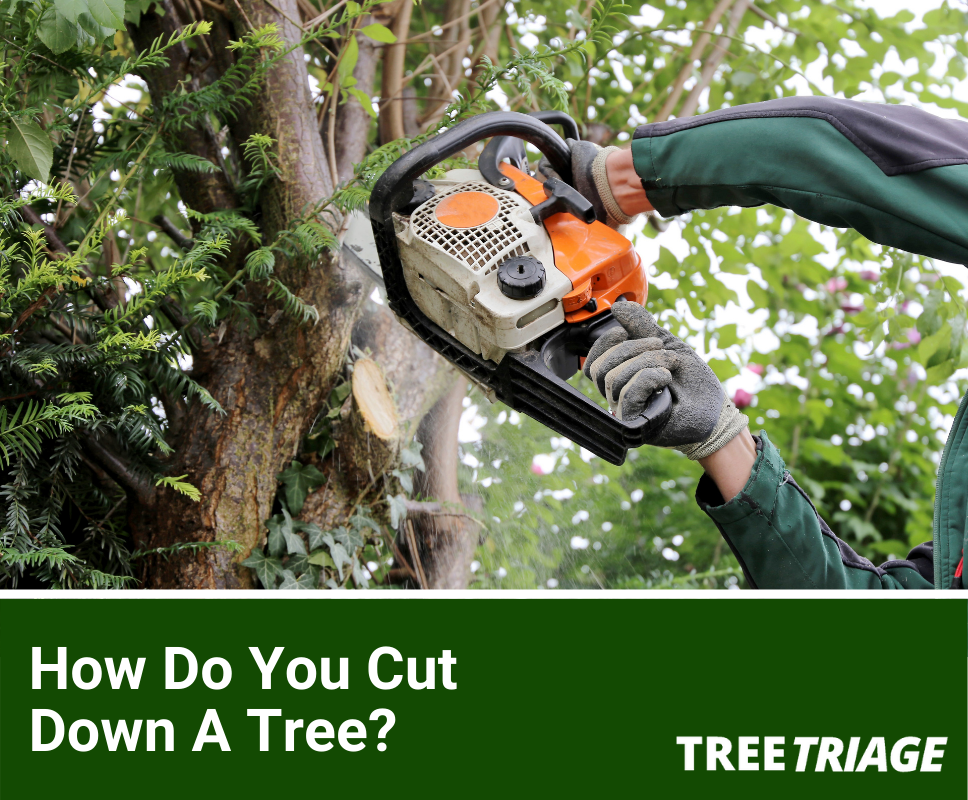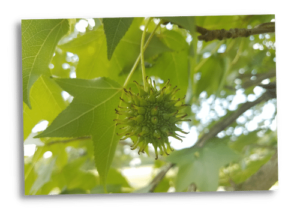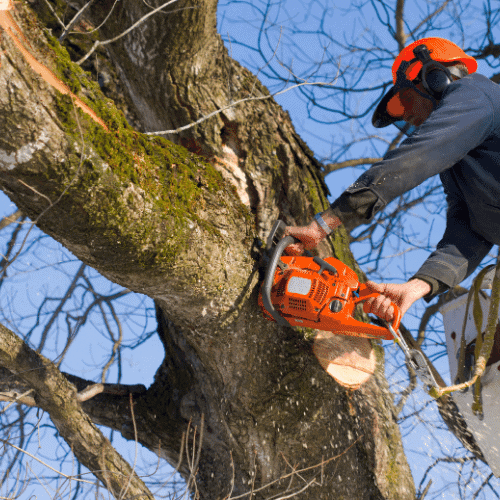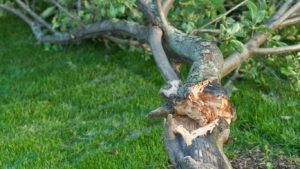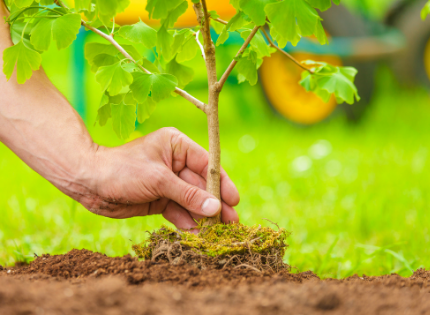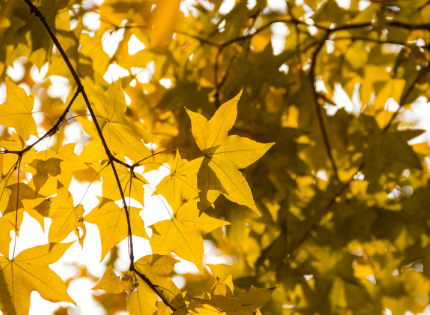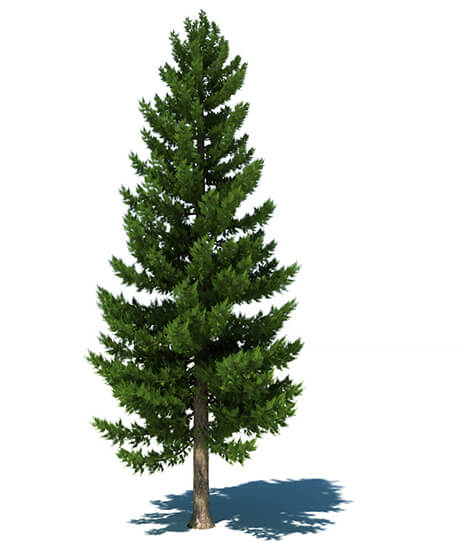Contents (Click To Jump)
- 1 What Is Tree Felling And Why Should You Take Down A Tree?
- 2 What Should You Know About Cutting Down a Tree Before You Start?
- 3 What Do You Need To Know About Chainsaws And Felling Your Own Trees?
- 4 What Are The Alternative Methods For Cutting Down Trees?
- 5 When Should You Hire A Professional For Tree Removal?
- 6 How Much Does Felling Cost?
- 7 Are You Ready To Go Fell Your Own Tree Now?
What Is Tree Felling And Why Should You Take Down A Tree?
Many homeowners may one day face the dilemma of felling a tree on their property.
While each tree is unique and poses its own issues when it comes to removal, there are a few key things you can take into consideration when you’re thinking about removing a tree on your property.
It can be sad to remove a tree from your property at times, but in some cases owners are left with little choice.
This could be because:
- The tree is now dead and posing a risk to people and property
- The tree or resulting foliage waste is causing problems (i.e., branches are removing shingles, gutters are being stopped up, they’re leaving sap or bird dung on a car, etc.)
- The tree has outgrown its spot and is now either in the way, tangled with another tree, or is threatening power lines
Sometimes it is possible to transplant trees – even large ones – so if you’d rather keep the tree and you want to see if that’s an option for you, contact one of our professionals to assess the situation for you.
Read More >> How Do You Transplant A Tree?
However, if you are prepared to cut down a tree safely, there are a number of conditions you should take into account as a DIYer. None of this work should be taken lightly and is really best served by professionals like us.
What Should You Know About Cutting Down a Tree Before You Start?
There are a few things you should take note of before you begin cutting down a tree on your property.
Size
Looking at the base of the tree, where you’ll make your cuts, at about hip-high — do you have a chainsaw with a large enough bar to safely manage the diameter of the tree?
While you could make multiple front and back cuts if necessary, this complicates the job and directly affects the way and direction the tree will fall.
Type
What type of tree is it? A small tree shouldn’t pose much of a problem. However, larger trees that require pruning and limbing first are best left to our professional crew.
Consider the difference between a 200-year-old oak and a 75-year-old straight pine with an obvious lean. One is going to be far easier to take down than the other.
Safety
What safety precautions and equipment should you consider? How about your escape routes, once the tree falls? Obviously, if there are power lines involved, call your local utility company and have them take a look before you do anything.
Felling trees is always best left to the professionals like us who are not only insured but also licensed for such hazardous work.
Even seasoned professionals are often surprised by the way a seemingly simple tree will twist from its tree trunk, or kick back, or even get caught in other trees on its way to the ground. None of the above are situations to take lightly.
What Do You Need To Know About Chainsaws And Felling Your Own Trees?
Chainsaw safety should be your first and absolute priority. Please keep, read and fully understand any and all materials, or instructions that come with your chainsaw — and refresh yourself each and every time you go to use it.
DIY homeowners often head out to their local hardware stores and buy the first (or biggest) chainsaw they come across. But this can often be overkill and totally unnecessary.
Always take a critical look at what you’d like to accomplish and make a plan. (e.g. If I cut here first, will that open up my access to these other limbs?)
Plotting your course not only makes your process easier but also supports safety throughout the process.
Here’s an excellent video help walk you through the process if you’re a complete novice:
Here is a (simplified) hypothetical situation. You have a 60′ pine tree on your property and your local arborist has determined that it’s a dead tree and is infested with bark beetles.
Fortunately, the tree is clear of any impediments for a full 360 degrees and the tree leans directly to the cardinal west.
Here’s a step-by-step guide to taking this tree down safely with a chain saw.
Step 1 – Gather Your Safety Equipment
Don your hard hat, gloves, hearing protection, goggles/safety glasses, and any other safety gear. Then clear any small twigs that could distract you from your work or impede your escape routes (I suggest you have two).
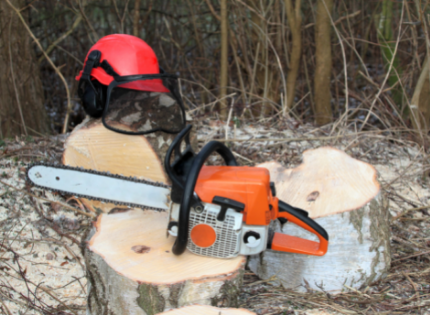
Step 2 – Prepare Your First Cut
The first cut will be a horizontal cut made at a comfortable level for your saw, usually, this is just above waist high approximately a third of the way into the diameter of the tree.
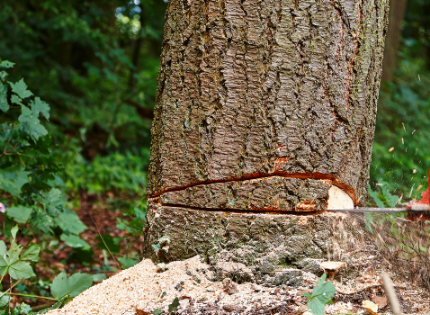
Step 3 – Evaluate The First Cut and Prepare The Second Cut
The second cut will be at a 45-degree angle from the top down and attempting to meet the end of the first cut on the same side of the tree. If this is performed perfectly (which is rare), you will have created a notch (face cut) in direct line with the direction of the tree’s lean.
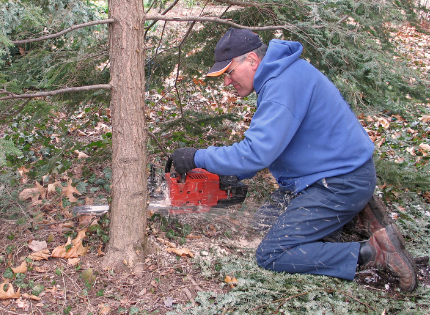
Step 4 – Make The “Felling Cut”
Now, from the opposite side of the lean (in our case, the east side of the tree), you will make a back cut in an attempt to meet the point of your notch. This is also known as the ‘felling cut.’
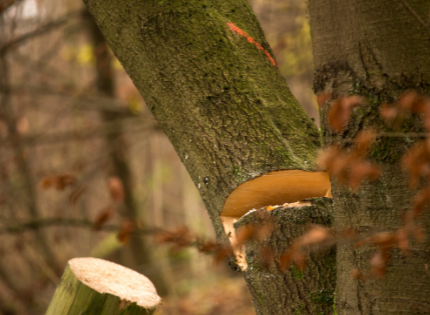
Step 5 – Prepare For The Tree To Fall
As you are making this back cut if the tree starts to let loose and fall— move fast! Get out of the way! This is because it can twist and ‘bounce’ from the stump and frankly, kill you. It’s not just where the tree falls that kills people, it’s often the kickback as it breaks free from the stump.
Sometimes it’s best to stop part of the way through the back cut and apply a felling wedge. Pound it in with a maul, or sledgehammer. This is to apply force to the tree in an effort to encourage it to fall into its established lean and face cut.
Once you hear any creaking, cracking, or moaning, stop cutting, or hammering on the wedge, the tree is ready to go— so move!
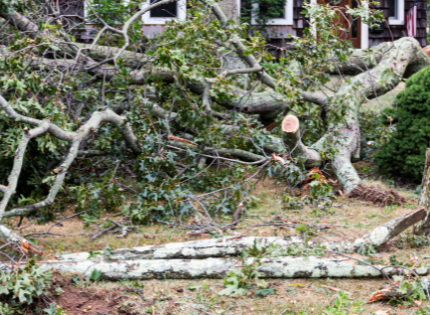
Other Things To Note When Felling A Tree
Please understand that there can seem to be a number of false starts and anti-climatic moments in an effort to bring down this tree. Don’t let any of this lull you into a lackadaisical state.
Know that every effort you make brings it closer and closer to the most dangerous point— a free-falling tree.
Once it’s (SAFELY) on the ground, and your adrenaline returns to normal, you can go about limbing the tree (usually from the big limbs to little) and then bucking it up into rounds that you’d split for firewood.
*Please Note: “Kickback” can also refer to when a chainsaw chain binds in a cut and sends the saw back in your direction. Most gas chainsaws have a wrist guard that when forced, acts as an engine kill brake just for these circumstances.
What Are The Alternative Methods For Cutting Down Trees?
Aside from chainsaws, there are other methods you can use to cut down a tree. However, many of these can add layers of complications that can create a major headache for inexperienced DIYers.
If you’re concerned about this, feel free to reach out to one of our professionals to assess the situation and help you determine the best way to cut down your tree.
Felling Aids
Using additional tools like wedges and breaking bars to help force a tree to fall in the correct direction after the notch (face cut) and back cuts have been made.
- Remember, every effort you make toward taking that tree down brings it closer to the moment when you are in the most danger.
- Please stay vigilant and remember a strong enough gust of wind is always possible. Never let a cut tree stand, without taking it down.
Here’s an excellent video on the topic.
Tree Driving
This is achieved by using the felling of a second tree to ram into the first that’s been cut but is now stuck in other surrounding trees.
Usually, this method is used in logging tracks that aren’t machined, public forests, or larger, forested estates.
Back Pulling
This is when block and tackle (or winch aids) are employed to encourage a tree to fall in the desired direction.
This is pretty common and quite helpful if you have got the tools and hands on-site to assist you.
Sometimes, nylon tow-straps are set as high as possible on the tree being cut. Those two ends are then yoked together and then hooked to a winch (on a 4×4), or to a hand winch set to a stable base.
Then pressure is applied just so the line (steel cable) is taut all the while the cutting continues. This is a bit of dance between operators, but safer than NOT using these aids.
Unfortunately, most of the danger still remains for the sawyer.
Crane Removal
As the name suggests, using a crane (in an urban/suburban environment) to vertically support the removal of a tree in close proximity to surrounding people or property.
This is actually pretty rare. Most of the time trees are just trimmed way back to the point of them not being a problem anymore…until they inevitably become one again.
Sometimes you’ll see cranes used while planting large, mature trees, like palms in roadway medians. This same principle is applied when taking down a large tree in a cramped area where felling it could damage property or pose a safety hazard.
When Should You Hire A Professional For Tree Removal?
Any time the job is outside of the safe scope of your expertise, you should consider calling one of our tree removal specialists to assess the situation. If the job is simply too big for you to safely handle, don’t attempt to take it on.
Tree removal can seem deceivingly simple, but it can easily get out of hand if you don’t know all the pitfalls to look out for and that’s when it’s smart to contact a professional to get the process properly assessed.
How Much Does Felling Cost?
The national average for tree removal is between $400 and $900. This would be for trees ranging between 19″ and 24″ in diameter.
In other instances, the height of the tree might be the way the estimate would be determined.
Consider the difference between a 60′ pine and a 60′ oak and it’s very easy to see how these two jobs are not even close in the amount of work required to safely complete.
Large trees, coming in at more than 36″ in diameter could cost upwards and well beyond $2000 to remove, including the stump. Always consider the area these crews would have to access. Usually, things like removing a section of fencing would be included in the estimate.
However, should the company require a crane or any other overly specialized equipment for any other reason, the estimate will reflect these costs accordingly.
Are You Ready To Go Fell Your Own Tree Now?
Now that you have a more complete idea of how to go about felling your own trees, the task should seem a bit more manageable. If you have a neighbor with more experience, first-hand knowledge is always best (so is the second set of hands and eyes).
Tree services and landscaping companies all rely on word-of-mouth, but sometimes connecting with the right people you need to be able to trust isn’t as easy as that.
Also, if you’ve taken all of this information in and realize that it’s just no a job you want to tackle, then give us a call.
We’re always available and happy to help sort out your situation — from safely and cleanly felling the tree, to processing it for you, then backfilling and seeding the stump hole with new grass so you’ll never know a hole was there. This is our job, this is our profession.
We’re here for you when you’re ready to move forward.

